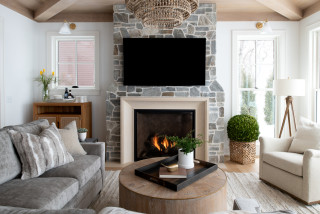
This article was originally published by a www.houzz.com . Read the Original article here. .

The Ryders expanded the home into what was once a deck to create a new living room. That allowed them to knock down walls and open up the kitchen footprint into the former living room to create an open-plan concept that breezily connects the new kitchen, dining and living spaces. It also freed up room for a large kitchen island that seats six. A mix of soft white and light gray cabinets and marble-look quartz countertops establishes a fresh and clean look. Wood flooring and hand-hewn wood ceiling beams add warmth. And a built-in coffee station ensures that the homeowners are well-caffeinated to manage the lively household.
This article was originally published by a www.houzz.com . Read the Original article here. .
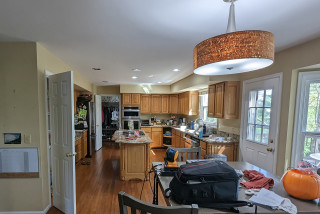
This article was originally published by a www.houzz.com . Read the Original article here. .
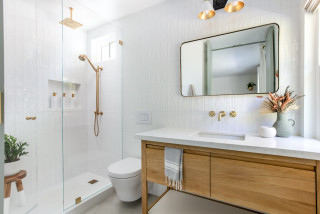
In fact, for the squeegee-averse, opting to use the guest bathroom and its shower with a curtain instead of a glass door is a timesaving trick that is not uncommon. Friends of mine once admitted that they shower in their guest bathroom so they don’t have to clean their newly remodeled, all-glass master bath shower. There’s got to be a better way. And I think there is.
This article was originally published by a www.houzz.com . Read the Original article here. .

Whether popping popcorn, reheating pizza slices, softening butter or melting chocolate, your microwave does heavy-duty work day in and day out. And that also means heavy-duty grime and food odors. Over time, all that exploded food mess can make your microwave less efficient. The good news is that we have a fast and easy way to get your microwave back to just-out-of-the-box clean, or almost there. Here’s how to clean a microwave.
Carpenter also suggests cleaning the inside of your microwave as part of your daily kitchen routine. Using a soft cloth, sponge or paper towel, wipe down the inside ceiling, floor, sides and tray. This removes any spatters that might have escaped containment before they have a chance to harden.
Shop for a microwave oven on Houzz
If the splatters are caked on, try steam before you apply elbow grease. Using a microwave-safe container, heat about 1 cup of water on high for two to three minutes. Let it sit for up to five minutes, then carefully remove the water (it will be hot) and the turntable. Wipe down all the surfaces with a soft cloth, sponge or paper towel.
How to Speed-Clean Your House
Follow up by using white vinegar as a natural disinfectant. Dip a microfiber cloth in a 50-50 water-vinegar solution, wring it out until it is slightly damp and use it to wipe down the surfaces. In most cases, this will be enough to leave your microwave’s interior sparkling. If there are still some splatters, just repeat the process.
Take a Vacuuming Master Class for a Spotless Home
Clean the turntable you removed earlier. Almost all turntables are dishwasher-safe, but if you’re not sure about yours or you doubt your microwave could be out of commission for the length of a dishwasher run, you can clean it with warm water and dish soap.
Wipe the rubber gaskets with a damp cloth too. A damp cloth is also a good choice for wiping down the glass door, but if the door is very greasy, use a 50-50 water-and-white-vinegar solution or glass cleaner. For a polished look, wipe everything dry with a soft, dry cloth.
New to home remodeling? Learn the basics
Carpenter recommends steam-cleaning the microwave’s interior once every week or so, but this method works even if you go longer between cleanings. And if you’re vacuuming your refrigerator vents, do your microwave vents at the same time. Your microwave will appreciate it.
More on Houzz
Read more cleaning guides
Browse kitchen photos
Find design and remodeling pros
Shop for home products
This article was originally published by a www.houzz.com . Read the Original article here. .
Nearly 1.3 million tax returns filed for tax year 2023 utilized the Residential Clean Energy Credit (25D tax credit), according to the latest IRS clean energy tax credit statistics. Through May 23rd of the 2024 tax filing season for 2023 returns, almost 138 million tax returns had been filed with the IRS, which indicates that 0.9% of returns filed utilized the 25D credit. Both 25C (Energy Efficient Home Improvement Credit) and 25D are claimed on Form 5695, as both are residential energy tax credits. A previous blog discussed the 25C credit, while this one focuses on the 25D credit. The two credits main difference is that 25C relates to improvements that make homes more energy efficient, while 25D is focused on investments associated with renewable energy in the home. The 25D credit is an annual credit that taxpayers may claim for investing in renewable energy for their residence, such as solar, wind, geothermal, fuel cells or battery storage technology.
The 25D tax credit allows home owners to claim qualifying residential clean energy expenditures made to their primary or secondary residence. Renters can also claim the credit for certain residential clean energy expenditures made to their residence while landlords cannot. Additionally, 25D can be applied to newly constructed homes as well as existing homes. The 25D credit amount is based on 30% of the clean energy expenditure and, unlike 25C, has no credit limit with one exception— the credit for fuel cell property expenditures is 30% up to $500 for each half kilowatt of capacity for the qualified fuel cell property. The 30% credit amount will fall to 26% in 2033 and 22% in 2034. Taxpayers can also include installation costs in the calculation of their credit amount. While the credit is non-refundable, taxpayers can carryforward the credit to reduce their tax liability in future years. Clean energy property must meet certain standards to qualify for the credit. For example, geothermal heat pumps must meet Energy Star requirements at the time of purchase.
Cost of Energy Property and Usage
The recent IRS data indicates that the most expensive clean energy investment claimed in tax year 2023 was the purchase and installation of qualified solar electric property at an average cost of $27,355. Shown below are the average cost and average credit (30% of cost) across each investment, while the average credit amount across all returns that claimed 25D is shown in green at $5,084. While not shown below, the average credit claimed in 2023 that was carryforward from a previous year was $7,019 and the average credit carryforward to next year was $7,464. Both carryforward credits were higher than the average credit amount claimed in 2023.
Solar electric property was also by far the most frequently claimed investment at 752,300 returns. The next highest claimed investment was qualified solar water heating property, with 139,130 returns. No other improvement appeared on over 100,000 returns. The qualified improvement that was least claimed on tax returns was fuel cell property, with only 35,850 returns. Fuel cell property is the only expenditure subject to a cap.
Income and Geographic Differences
The Residential Clean Energy Credit is not subject to income limitations, meaning any taxpayer regardless of income can claim the credit on their tax return. The income level that most frequently claimed the credit was between $500,000 and $1,000,000 at 1.99%. Given the average cost of each improvement, it comes as little surprise that lower incomes claim the credit less frequently.
Geographically, the highest claim rate of the 25D tax credit was in Nevada, with 2.0% of returns claiming the credit. Florida had the second highest claim rate at 1.8%. The lowest claim rate was in North Dakota, at just 0.2%. Of note, higher usage rates of the 25D tax credit are found in states in the southwest, with Nevada (2.0%), Arizona (1.6%), Texas (1.6%), California (1.6%), and New Mexico (1.5%) all ranking in the top ten. This may be due to their significantly higher exposure to the sun, leading to higher potential benefits from installing solar electric property.
New Hampshire had the highest average credit amount at $7,581. This was $500 more than the second highest state which was Hawaii at $7,055. The lowest average credit amount was in Mississippi, at $2,248.
Discover more from Eye On Housing
Subscribe to get the latest posts sent to your email.
This article was originally published by a eyeonhousing.org . Read the Original article here. .

This article was originally published by a www.houzz.com . Read the Original article here. .
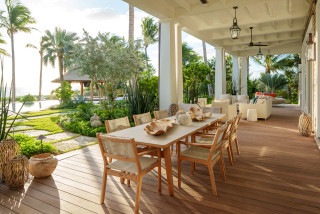
Read on to learn how to clean different types of outdoor furniture and accessories. Here’s a hint: Start with the simplest option, then move on to more aggressive methods. You also should consult any available care instructions.
This article was originally published by a www.houzz.com . Read the Original article here. .

This article was originally published by a www.houzz.com . Read the Original article here. .
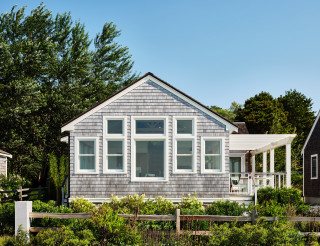
This article was originally published by a www.houzz.com . Read the Original article here. .
Now it’s time to tackle the cleaning. Focus on small areas where dirt is visible and spot-clean them. For minor blemishes, you can use vinegar and a microfiber cloth and gently wipe.
Alternatively, make your own natural upholstery cleaner, which you can use for this phase and the next. Add a teaspoon of dishwashing liquid to a small bowl of warm water and use an electric hand mixer to whip it up until the mixture forms soft peaks.
Gently apply the soap suds to the stain with a soft-bristle brush and rub until you see some of the dirt lifting off. Use a spatula to remove most of the dirty foam, then rinse the rest away with a white cloth and a very small amount of fresh water. Once the suds have been completely removed, take a close look at the stain to see if you need to repeat the process.
Find home professionals and services